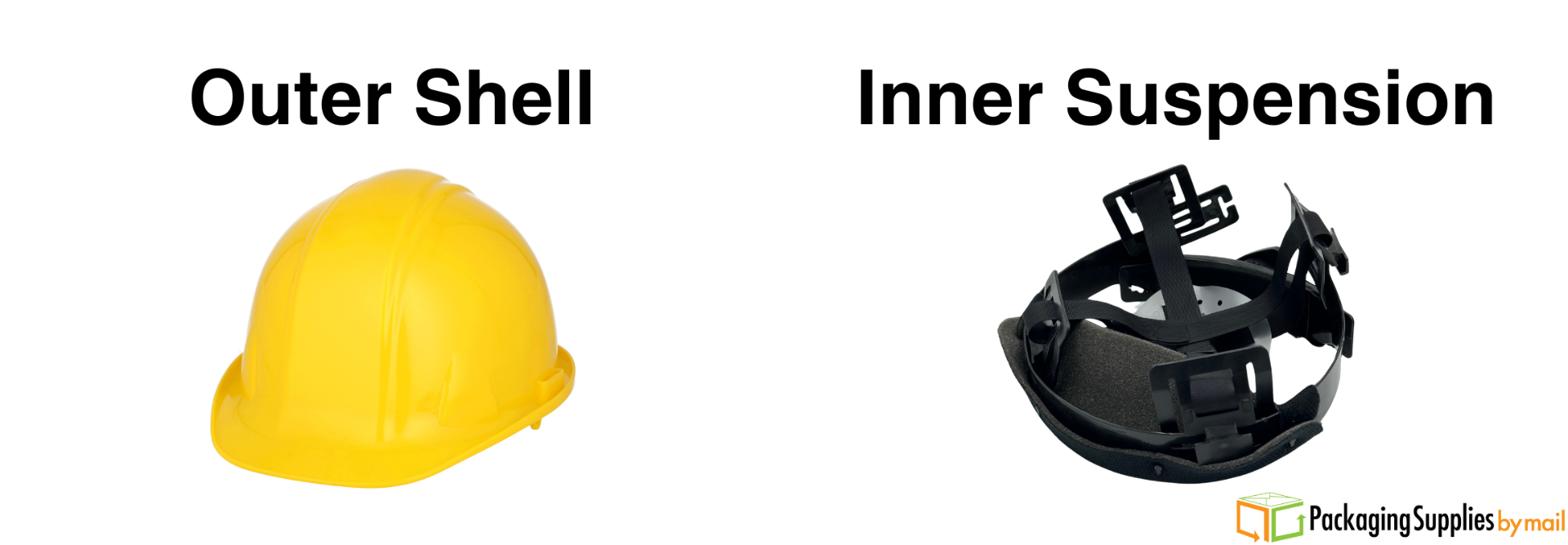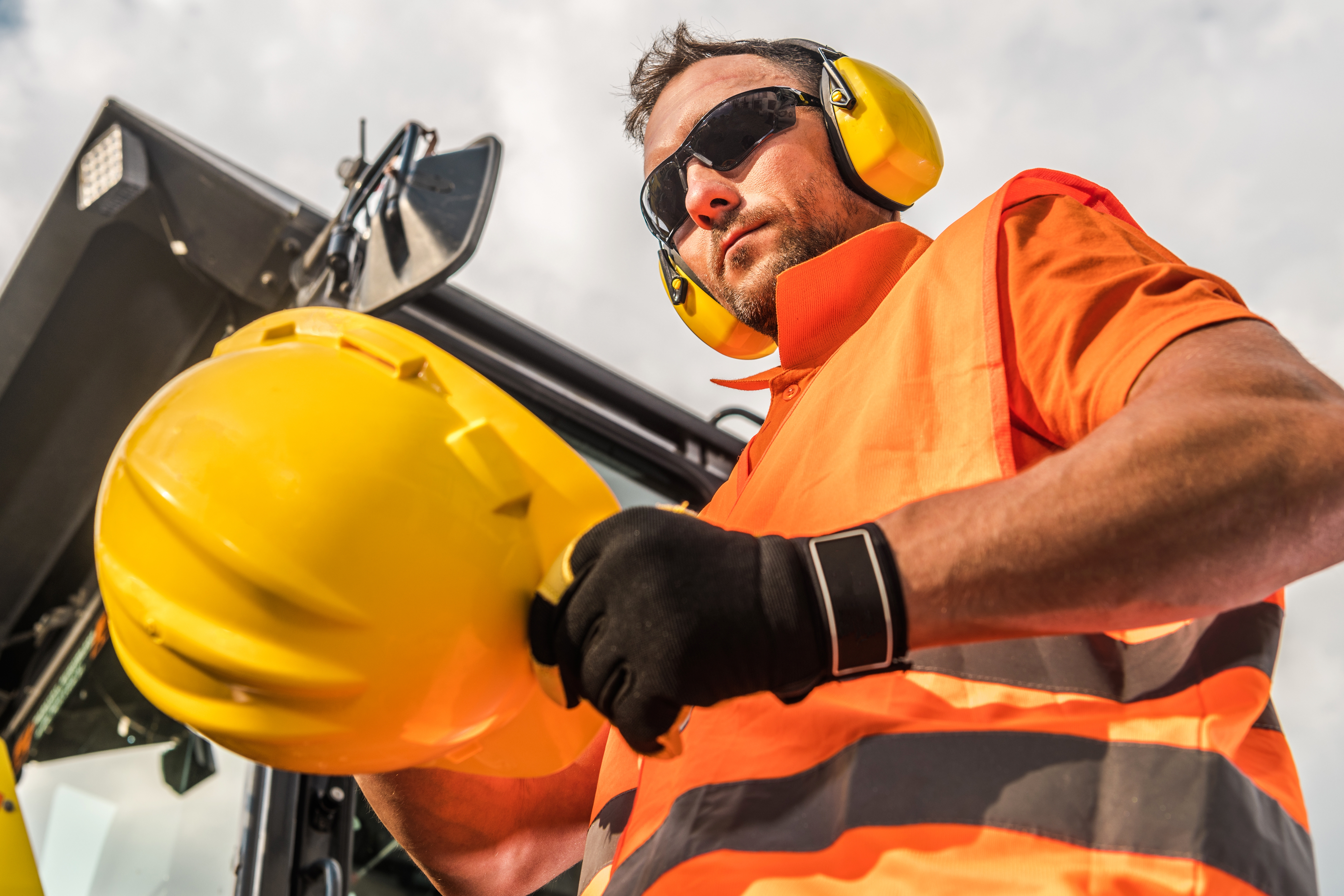Hard hats are one of the most easily recognizable pieces of personal protective equipment, or PPE. In fact, the hard hat is practically a universal symbol for construction and industry, and for good reason. Since being made mandatory for the construction of the Golden Gate Bridge way back in 1933, hard hats have protected the heads of laborers around the world. Even if you’ve worn hard hats, it never hurts to go over the basics, including types, classes, colors, upkeep, and replacements. By the end of this article, you’ll know what kind of protection your hard hat offers and how to ensure it's in good working order.
What is a Hard Hat Made Of?
Hard hats are made of two main components: the outer shell and the inner suspension. The outer shell is formed from high-density polyethylene (HDPE) that has been tested and approved by both the Occupational Safety and Health Administration (OSHA) and the American National Standards Institute (ANSI). The inner suspension is a harness made of vinyl, nylon, or PE that fits snugly on your head and keeps it roughly an inch away from the outer shell on all sides.

What are the Types of Hard Hat?
ANSI has established two types of hard hat:

Type I: Only offers protection for the top of the head.
Type II: Offers protection for both the top and sides of the head.
What are the Classes of Hard Hat?
There are three classes of hard hat, based on their resistance to electrical shock:
Class |
Designation |
Impact |
Penetration |
Electric Shock |
|
Class G |
General |
 |
 |
Up to 2,200 Volts |
|
Class E |
Electrical |
 |
 |
Up to 20,000 Volts |
|
Class C |
Conductive |
 |
 |
 |
What Do the Different Colors of Hard Hat Mean?
Neither OSHA nor ANSI have any rules or regulations governing the designation of hard hat colors. However, these designations are usually determined by the companies operating within certain industries and can vary from industry to industry:
Yellow: General Laborers
Blue: Electrical Workers or Carpenters
Green: Safety Inspectors or New Workers
White: Supervisors or Visitors
Brown: Welders or High-Heat Workers
Orange: Road Crews
What are the Types of Brim?
There are a few variations based on the amount of protection it offers and its ability to accommodate additional pieces of gear:
Brim |
Image |
Features |
|
Full Brim |
 |
The brim encircles the entire hat, offering greater protection from falling objects and ultraviolet light |
|
Cap/Partial Brim |
 |
The most common type with the brim restricted to the front of the hat like a ball cap |
|
Slotted Cap |
 |
Like the partial brim, but with slots above the ear so that workers can insert hearing protection, flashlight holders, and other PPE |
When Do I Wear My Hard Hat?
According to OSHA 29 CFR 1910.135 A, Head Protection General Requirements, “each affected employee shall wear protective helmets when working in areas where there is a potential for injury to the head from falling objects” and that “protective helmets designed to reduce electrical shock hazard shall be worn by each such affected employee when near exposed electrical conductors which could contact the head”.
In short, when your head is at risk from impact by falling objects and/or shock from electrical discharge, wear a hard hat.
How Do I Wear My Hard Hat?
It just goes on your head, right? Well, yes, but there’s more to it.
When you place your hard hat on your head, you want to make sure that the suspension is a snug fit; it shouldn’t be tight to the point where it’s causing pinching or headaches, but neither should your hard hat easily slip off your head. You should make sure the suspension keeps the outer shell an inch away from your head on all sides. And while we’re on the subject, you are allowed to mix and match suspensions and shells so long as the components are compatible and compliant with each other.
Hard hats should never be worn backward unless otherwise indicated by the symbol of two curving arrows that form a circle, known as the “Reverse Donning” symbol:

Headwear like hooded sweatshirts are allowed so long as they don’t decrease the clearance between the suspension and shell. Unfortunately, ball caps are not allowed as they often contain a metal button on the top which can nullify the hard hat’s electrical resistance.
How Do I Take Care of My Hard Hat?
Like with anything, the more you take care of your hard hat, the longer it will last. However, the components of a hard hat are specially formulated to protect against impacts and electrical charge, meaning these protective finishes can degrade over time if they’re not attended to.
First, inspect your hard hat. You want to visually check every square inch of your hard hat to ensure there are no cracks, damage, or defects. Even the smallest crack can compromise your hard hat’s protective capabilities, so make sure you’re thorough. Once you’ve inspected your hard hat, clean it with mild soap and warm water. Higher-strength cleaning products may contain ingredients that can hinder the hat’s integrity, so some simple soap and water will do the trick. Gently scrub the hat until all the dirt and grime that you can remove is gone.
Also, when you’re not wearing your hard hat, think about where you’re putting it. Don’t leave it in your car to bake and crack. When you clock out, store your hard hat in a clean, dry area. This helps to preserve the material and keeps outside contaminants away.
Can I Put Stickers/Labels/Paint on My Hard Hat?
That depends. Generally speaking, you are allowed to decorate your hard hat with stickers, so long as the stickers are placed at least half an inch away from the edge of the hat and don’t cover any major cracks or defects.
Workers should be careful when applying labels or paint to their hard hats. The substances used to manufacture certain kinds of labels and paints can affect the material of the outer shell and compromise its protection. If you would like to add labels or paint to your hard hat, speak with either your supervisor or the manufacturer of your hard hat to learn what kinds of products are allowed.
When Should I Replace My Hard Hat?
Unfortunately, hard hats do not last forever. Manufacturers recommend replacing hard hats that see frequent use every 2 years and replacing any hard hat every 5 years. At the same time, the inner suspension should be replaced every year.
However, there are also situations that call for an immediate replacement. If your hat falls from more than 10 feet high or has endured a substantial impact, it should be replaced. A hard hat in good condition will have a glossy shine, so if your hat loses its shine or begins to flake, it needs to be replaced. Finally, if you come across any visible indications of damage, no matter how small, replace your hard hat.
Capping Off
There sure are many regulations and varieties of hard hat, but that’s no mystery. Hard hats are one of the most important pieces of PPE you will wear. Frankly, while the human body can afford to lose a hand or foot, it can’t afford to lose its head. With this importance in mind, you should take the time to check your hard hat at set intervals for any damage or defects and regularly clean away any dirt and grime. In essence, if you take care of your hard hat, it will take care of you.
If you’re looking for more information on personal protective equipment, be sure to check out our introductory guide to gloves and hand safety.









